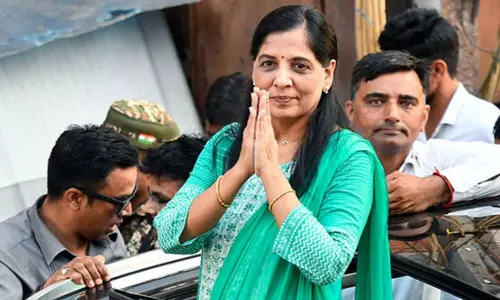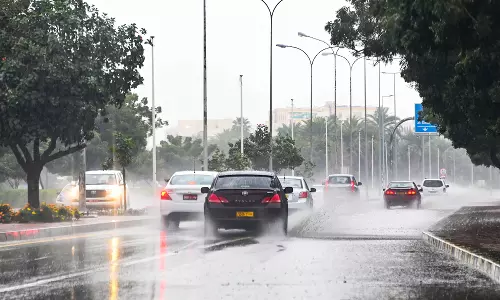
Gaganyaan mission: ISRO preps 1st flight test to demonstrate crew escape system
text_fieldsChennai: The Indian Space Research Organisation (ISRO) has announced that it will commence unmanned flight tests for its human space mission Gaganyaan for which the preparations for the Flight Test Vehicle Abort Mission-1 (TV-D1) that demonstrates the performance of the Crew Escape System are underway.
The Gaganyaan mission is aimed at developing a human-habitable space capsule that will carry a three-member crew into an orbit of 400 km (250 miles) for three days, before returning to safety in a planned splashdown in the Indian Ocean.
The test vehicle, a single-stage liquid rocket developed for this abort mission, is in the final stages of preparation, the space agency said.
ISRO said, “The payloads consist of the Crew Module (CM) and Crew Escape Systems (CES) with their fast-acting solid motors, along with CM fairing (CMF) and Interface Adapters”.
This flight will simulate the abort condition during the ascent trajectory corresponding to a Mach number of 1.2 encountered in the Gaganyaan mission.
ISRO said the Crew Escape System with Crew Module will be separated from the Test Vehicle at an altitude of about 17 km.
“Subsequently, the abort sequence will be executed autonomously commencing with the separation of CES (Crew Escape System) and deployment of the series of parachutes, finally culminating in the safe touchdown of CM (Crew Module) in the sea, about 10 km from the coast of Sriharikota,” ISRO said.
The Crew Module will house the astronauts in a pressurised earth-like atmospheric condition during the Gaganyaan mission.
For the TV-D1, the Crew Module is an unpressurised version that has completed its integration and testing and is ready to be shipped to the launch complex. This unpressurised Crew Module version has to have an overall size and mass of the actual Gaganyaan Crew Module and would house all the systems for the deceleration and recovery with its complete set of parachutes, recovery aids, actuation systems, and pyros.
The avionics systems in the Crew Module are in a dual redundant mode configuration for navigation, sequencing, telemetry, instrumentation, and power.
According to ISRO, the Crew Module in this mission is extensively instrumented to capture the flight data for evaluation of the performance of various systems.
It will be recovered after touchdown in the Bay of Bengal, using a dedicated vessel and diving team from the Indian Navy.
The space agency said the Crew Module after integration underwent various electrical testing, at ISRO’s facility in Bengaluru, including an acoustic test, and was dispatched to the Satish Dhawan Space Centre in Sriharikota on August 13.
At Sriharikota, it will undergo vibration tests and pre-integration with the Crew Escape System, before final integration to the Test Vehicle at the Launch Pad.
This Test Vehicle mission with this Crew Module is a significant milestone for the overall Gaganyaan program as a near-complete system is integrated for a flight test. The success of this test flight will set the stage for the remaining qualification tests and unmanned missions, leading to the first Gaganyaan mission with Indian astronauts, ISRO said.
With IANS inputs























